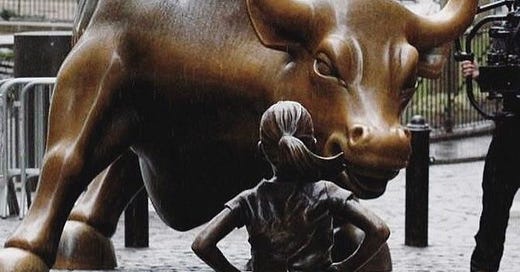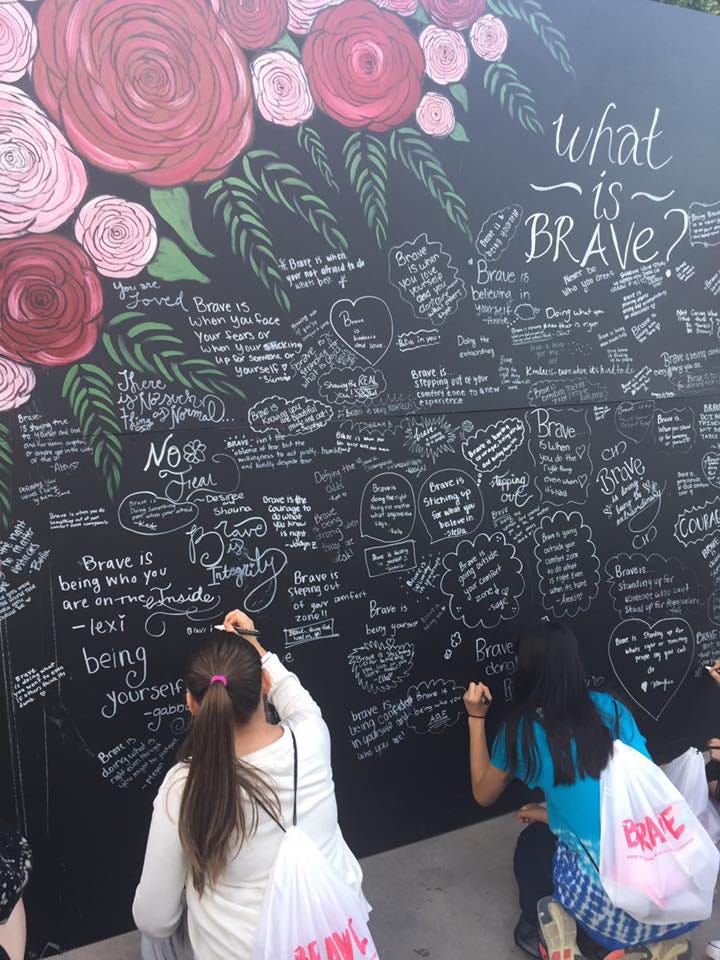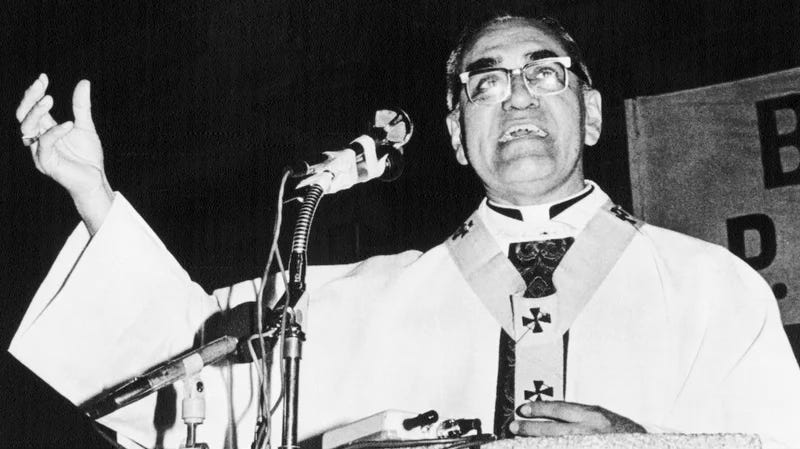There is a lot of talk about bravery, but far less evidence of it in real life. True bravery isn’t just a concept—it’s a lifestyle. It’s something we live out in the everyday moments that define us. In my experience, bravery is taking selfless and hopeful risks, standing with courageous commitment, and refusing to give up. Put those together, and you are crafting a brave life.
Fearless Girl, by sculptor Kristen Visbal, was first installed near the Charging Bull statue on Wall Street on March 7, 2017, one day before International Women's Day.
But what is bravery, really?
Society often equates bravery with extreme sports, thrill-seeking, or venturing into the unknown—jumping out of airplanes, trekking through jungles, exploring the depths of the ocean, or even traveling to space. Maybe that’s because we haven’t fully understood what it means to be truly brave. We mistakenly believe bravery is just about adrenaline and risk. But risk alone, without the hope of change or the intention to help others, is nothing more than narcissism disguised as courage.
Take, for example, the tragic story of the Titan Submersibal and the many billionaire adventurers who risked a journey to the bottom of the ocean. They trusted a reckless leader whose company ignored safety protocols and ultimately paid with their lives. Was that bravery? Or was it blind risk-taking, with no real hope or intention of making the world better?1
Contrast that with a woman I know who visited a brothel—not to judge, but to bring homemade cupcakes and an open heart. She risked harm, embarrassment, rejection, and a tarnished reputation. But risk alone wasn’t what made her brave. Her bravery was in the why - her selfless and hopeful desire to bring love and connection to women trapped in a cycle of harm. The first visit took courage, but the real test came when the adrenaline wore off. When weekly visits became routine, when the work seemed to make little difference, when stigma and sneers surrounded her—she kept going. Years passed. Obstacles arose. A knee replacement, the temptation of an easier life, age, and doubt. Still, she remained. That’s when acts of bravery have matured into a brave life.
Bravery isn’t just about a single bold act—it’s an unwavering commitment.
Take Leymah Gbowee, Nobel Peace Prize winner and Liberian activist. In the midst of civil war under the brutal rule of Charles Taylor, she made a decision: she wouldn’t live in fear anymore. Stepping over a dead body in the street, she chose not despair, but courage. And she didn’t just take a risk—she took a stand. Dressed in white, she prayed and lamented in public. People dismissed her. She was mocked. But she refused to stop.
August 28, 2003: Liberian women staging a protest march in front of the ECOMIL headquarters in Monrovia, Liberia. Leymah Gbowee was 17 years old when the First Liberian Civil War started in 1989. While the conflict raged, she became a young mother and eventually trained as a social worker and trauma counselor. Gbowee came to believe in women’s responsibility to work proactively to restore peace and became a founding member of the Women in Peacebuilding Network (WIPNET) of the West Africa Network for Peacebuilding (WANEP). She organized Christian and Muslim women to mobilize for peace, giving rise to the interfaith movement known as the Women of Liberia Mass Action for Peace. Leymah was appointed its spokesperson and led the women in weeks-long public protests that grew to include thousands of committed participants. (Photo credit: PIUS UTOMI EKPEI/AFP/Getty Images)
And bravery is contagious.
Soon, dozens of women joined her. Then hundreds. Then thousands. In the end, these brave women, dressed in white, staged a strategic sit-in to force a peaceful political transition of power. Their movement ousted a tyrant, changed Liberia’s future, and led to Africa’s first female president.2
“You can never leave footprints that last if you are always walking on tiptoe.”
- Leymah Gbowee
Leymah didn’t just do a brave thing—she became brave. Today, her foundation still works for justice, passing on courage to the next generation. Because true bravery doesn’t fade—it multiplies.3
Bravery is personal.
Image from Terrence Malick’s A Hidden Life it tells the true story of Franz Jägerstätter, an Austrian farmer who refused to fight for the Nazis.
Bravery isn’t always found in grand revolutions. It can be deeply personal. Steve Carter, in his book Grieve, Breathe, Receive, tells the story of standing against abuse within Willow Creek Community Church. When allegations surfaced against its revered leader, he faced a choice: stay silent or stand for truth. He chose the latter. He risked friendships, career, reputation—everything. But he didn’t stop. He listened to victims. He refused to comply with a corrupt system. He walked away from power and privilege to rebuild his life on integrity. Steve didn’t just make one brave decision—he’s cultivating a brave life.4
Sometimes bravery looks like fighting giants in the spotlight. Dietrich Bonhoeffer was a German pastor and theologian who bravely resisted the Nazi regime. His courage was evident in his outspoken opposition to Adolf Hitler and the persecution of Jews, despite the great personal risk involved. He was a key figure in the Confessing Church, which rejected Nazi control over Christianity, and he actively worked against the regime. Arrested in 1943, Bonhoeffer was imprisoned for two years before being executed in April 1945, just weeks before the end of World War II. His legacy is one of moral conviction, faith-driven resistance, and the willingness to sacrifice his life for justice.5 We know and celebrate his bravery now.
“Silence in the face of evil is itself evil: God will not hold us guiltless. Not to speak is to speak. Not to act is to act.” - Bonhoeffer
But more often, true bravery is hidden. It’s costly. It’s misunderstood. It’s filled with misalignment, opposition, and sacrifice. Being brave isn’t just about a one-time act of courage—it’s about living selflessly and hopefully, over and over again. It’s about the willingness to endure, to keep going when giving up would be easier. True bravery is the dogged determination to never give up.
If you’ve never seen A Hidden Life, now might be the time. Directed by Terrence Malick, it tells the true story of Franz Jägerstätter, an Austrian farmer who refused to fight for the Nazis. Despite relentless pressure from his village, his church, and his government, he stood firm. His courage cost him everything—his freedom, his life. But his story lives on as a testament to the power of unwavering conviction. That’s what a brave life looks like.6
Brave Global
It’s no accident that a movement I co-founded to empower girls before they are trafficked is called Brave. We invite communities to take selfless and hopeful risks, to commit courageously to change, to stop exploitation before it begins. We’re not just asking at-risk girls to be brave—we’re cultivating bravery as a way of life together. Because like the women in Liberia, like the woman visiting a brothel , like Steve Carter and Bonhoeffer and Franz Jägerstätter—we refuse to stand by while injustice wins. If traffickers can target vulnerable girls, then brave people can stop it.
I am slowly understanding that the grassroots strategy of being brave for at-risk youth in order to stop the horrible reality that is human trafficking is connected to a much deeper need for bravery in all spheres of our lives.
Girls expressing their thoughts on what brave is at a Brave Global event.
The truth about being brave
Convincing those with privilege and power to prioritize the marginalized is no small feat. In many ways, it feels miraculous. And yet, this is the radical sign and wonder that followers of Jesus are meant to be—a countercultural force living courageously for others in a world consumed by self-interest. We champion the poor in societies that glorify the wealthy, we give generously in defiance of greed-driven economies, and we choose love over fear, even when oppressive leaders demand our silence.
As C.S. Lewis observed, “Courage is not simply one of the virtues, but the form of every virtue at the testing point.”
History confirms this truth. Roman Emperor Julian the Apostate, in the 4th century, sought to revive paganism and lamented that Christianity was spreading—not because of its doctrines alone, but because of its bravery:
“Why do we not observe that it is their benevolence to strangers, their care for the graves of the dead, and the pretended holiness of their lives that have done most to increase Christianity? … Christianity has been specially advanced through the loving service rendered to strangers, and through their care for the burial of the dead. It is a scandal that there is not a single Jew who is a beggar, and that the godless Galileans care not only for their own poor but for ours as well.” 7
One of the greatest failures in Christian history is when we have turned away from this calling—when we have refused the invitation to embody true bravery in a world desperately in need of it.
To center the socially excluded, to listen to marginalized voices, and to prioritize the vulnerable requires intention, courage, investment, and commitment. This is difficult even in times of stability. But in moments of upheaval—when political unrest, financial hardship, and fear dominate the cultural landscape—this is when bravery must rise. And we must have the wisdom to listen to those who have cultivated it.
Brave voices that still speak.
Óscar Romero, the Archbishop of San Salvador, embodied this courage through prophetic preaching, nonviolent resistance, and unwavering solidarity with the poor. His bold stand against oppression cost him his life, but his words still challenge us:
“A church that does not unite with the poor to denounce injustices is not truly the church of Jesus Christ.”
"At a time of so much confusion and anguish," Romero said in a 1980 homily, "I want to be a messenger of hope. In the midst of tragedy and bloodshed, there is hope." Bettmann Archive
Martin Luther King Jr., assassinated for his fight against racial injustice, non-violence and economic reform, preached a vision of Christian courage that transcended comfort and convenience:
“The ultimate measure of a person is not where they stand in moments of comfort and convenience, but where they stand at times of challenge and controversy.”
Harriet Tubman, a fierce disciple of Jesus, risked her life repeatedly to lead enslaved people to freedom. She knew that courage was not an abstract ideal but a necessity for survival and perseverance was key:
“If you hear the dogs, keep going. If you see the torches in the woods, keep going. If there’s shouting after you, keep going. Don’t ever stop. Keep going.”
Susan B. Anthony, raised in the Quaker tradition, spent her life fighting for abolition and women's suffrage. She observed that fear of reputation is the enemy of reform:
“Cautious, careful people, always casting about to preserve their reputations… can never bring about a reform. Those who are really in earnest must be willing to be anything or nothing in the world’s estimation.”
The Call to Courage
The world does not change through silence or self-preservation. It changes through those willing to risk everything for justice, truth, and love. The question is not whether these times demand courage - they always have and always will. The real question is: Will we be brave enough to meet them?








